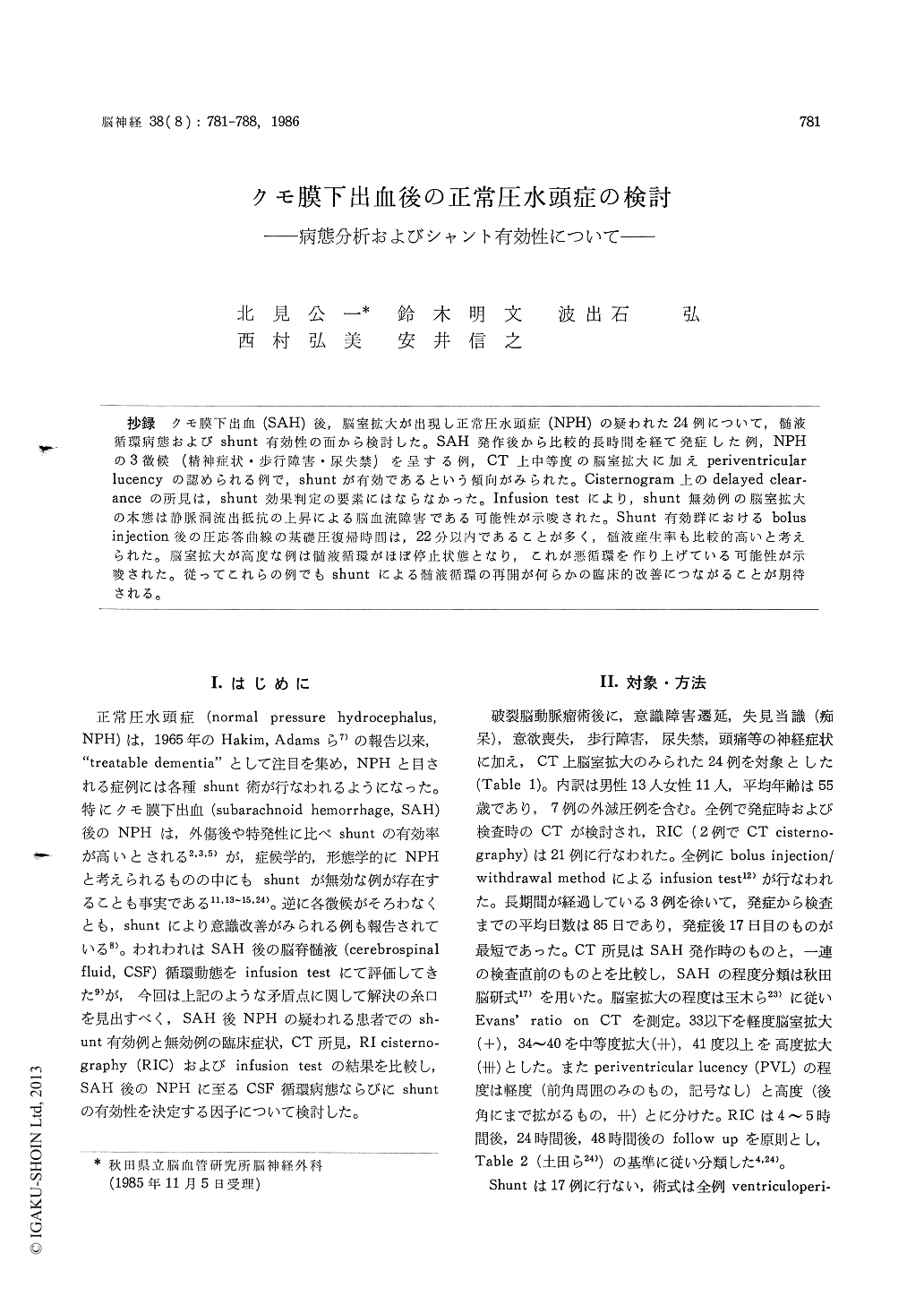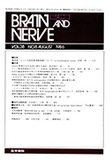Japanese
English
- 有料閲覧
- Abstract 文献概要
- 1ページ目 Look Inside
抄録 クモ膜下出血(SAH)後,脳室拡大が出現し正常圧水頭症(NPH)の疑われた24例について,髄液循環病態およびshunt有効性の面から検討した。SAH発作後から比較的長時間を経て発症した例,NPHの3徴候(精神症状・歩行障害・尿失禁)を呈する例,CT上中等度の脳室拡大に加えperiventricularIucencyの認められる例で,shuntが有効であるという傾向がみられた。Cistemogram上のdelayed clear-anceの所見は,shunt効果判定の要素にはならなかった。Infusion testにより,shunt無効例の脳室拡大の本態は静脈洞流出抵抗の上昇による脳血流障害である可能性が示唆された。Shunt有効群におけるbolusinjection後の圧応答曲線の基礎圧復帰時間は,22分以内であることが多く,髄液産生率も比較的高いと考えられた。脳室拡大が高度な例は髄液循環がほぼ停止状態となり,これが悪循環を作り上げている可能性が示唆された。従ってこれらの例でもshuntによる髄液循環の再開が何らかの臨床的改善につながることが期待される。
Twenty-four adult cases of suspected normal pressure hydrocephalus (NPH) after subarachnoid hemorrhage (SAH) were investigated clinically from the aspect of predicting the efficacy of the shunting procedure. They consisted of 13 men and 11 women, with the mean age of 55-y-o. In addition to checking neurological signs, pre- and postoperative CT scans, RI (or CT) cisternography and bolus infusion test were per-formed in each of them. Shunt surgery was done, all of which ventriculoperitoneal shunt, in 17 patients. They were divided into three groups, namely, shunt effective group (A), neurologically unchanged group after surgery (B) and worsened group (C). The A group had 8 cases, B had 8 also and C contained only one. Effectiveness of shunt procedure was measured by an improve-ment in the activity of daily life (ADL). Com-pared with group B, group A tended to have more cases of delayed onset of NPH (mean days of 112 from SAH attack in group A while 55 days in group B), cases with "trias" (3 against 0) and moderate ventricular dilatation with peri-ventricular lucency (8 against 2). The finding of delayed clearance in cisternogram did not make an accurate judgement in the efficacy of shunt surgery. By using the bolus method of infusion test, the true cause of shunt non-effective ven-tricular dilatation was suggested to the disturb-ance of cerebral blood circulation due to elevation of intracranial venous outflow resistance. This suggestion was elicited by the analysis of pres-sure response curve gained from the bolus injec-tion, in which group A cases mainly reached the baseline pressure wthin 22 minutes, but on the contrary group B showed more than 22 minutes as a rule. The infusion test also suggested the relatively high cerebrospinal fluid (CSF) produc-tive rate in the shunt effective group. Cases with markedly enlarged ventricle seemed to have stagnated CSF circulation which interrupted the clinical improvement. Shunting procedures were again suggested a good therapeutic method for such cases, if these had worked well in low CSF pressure.

Copyright © 1986, Igaku-Shoin Ltd. All rights reserved.


